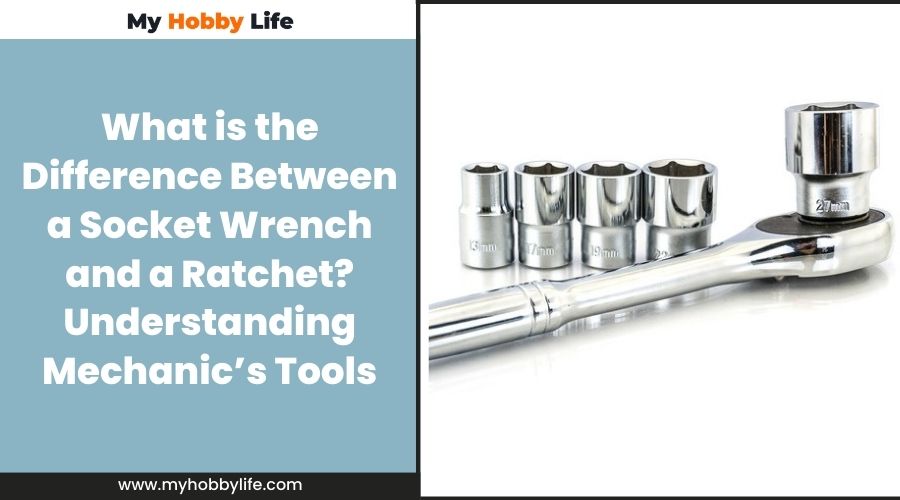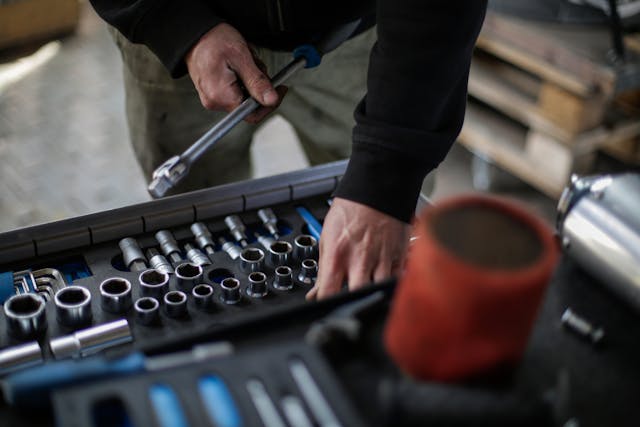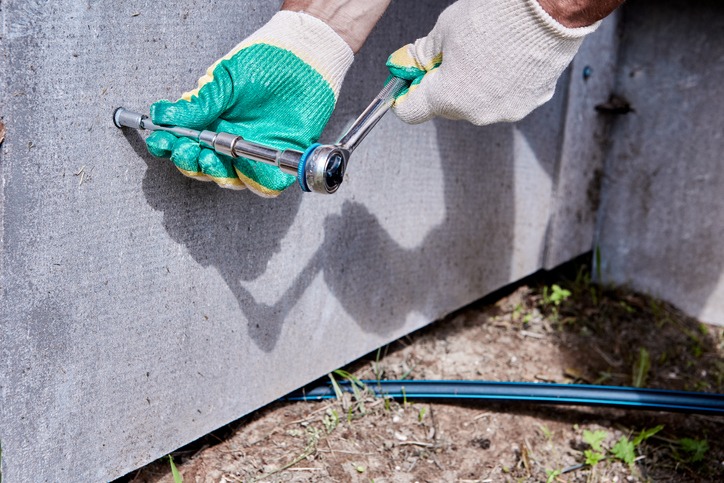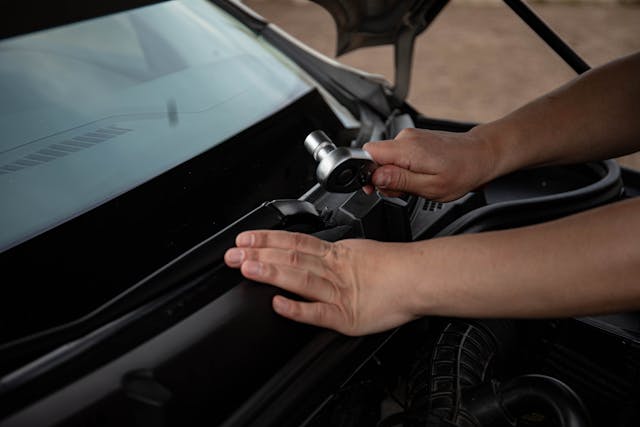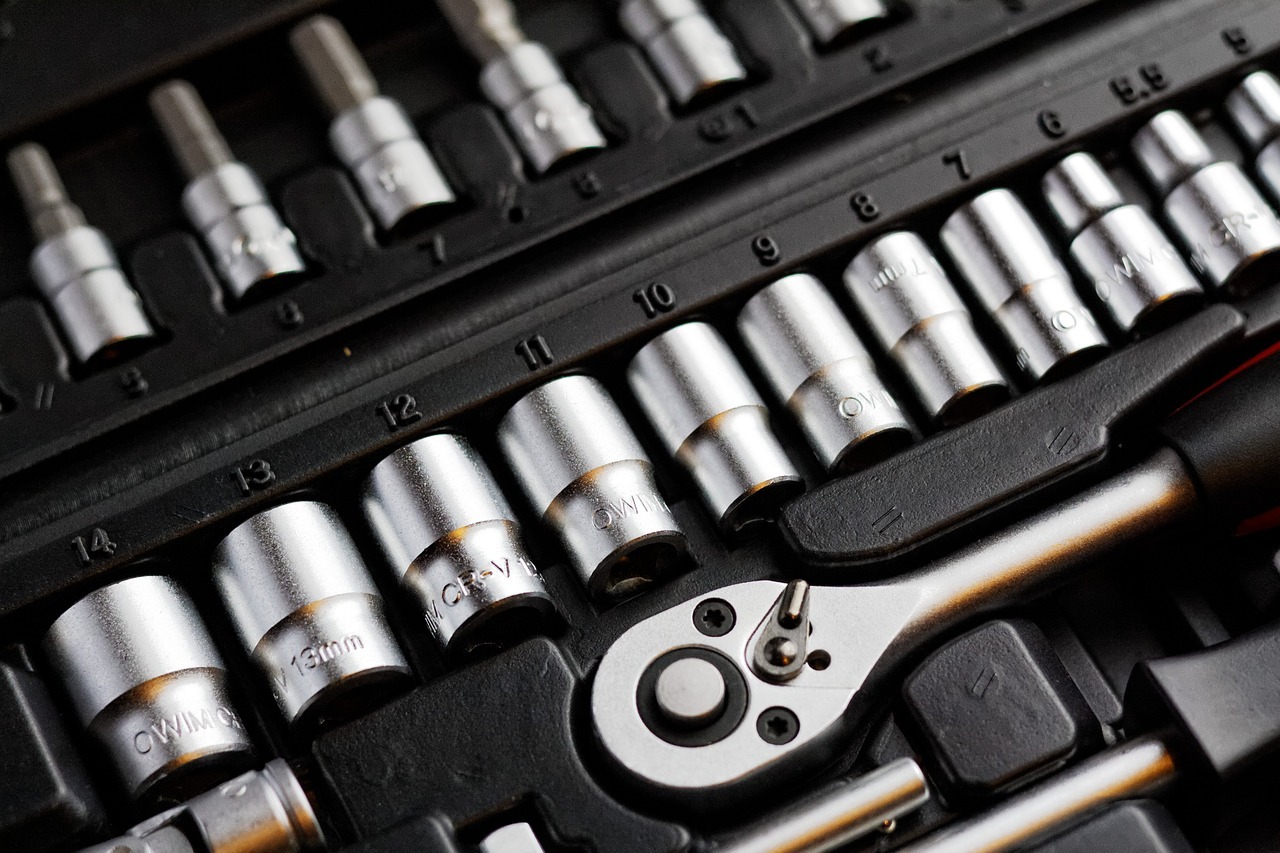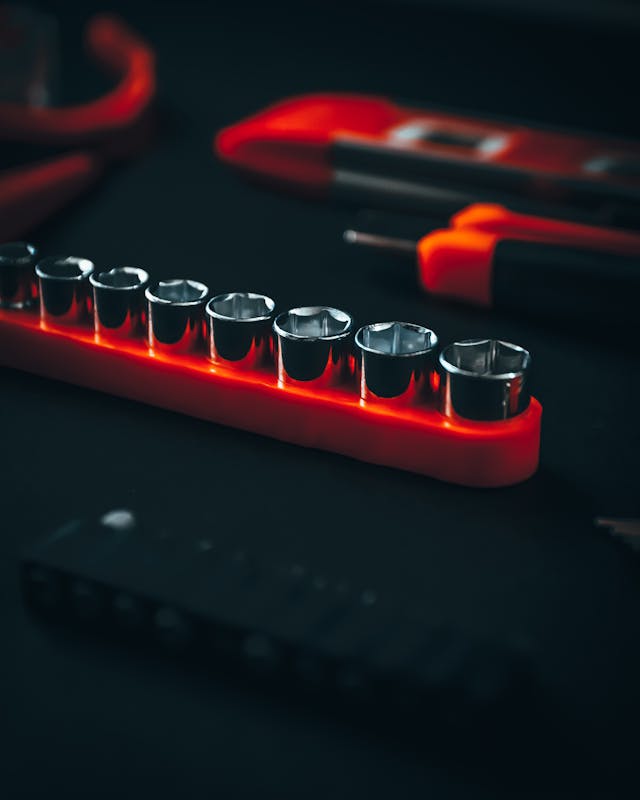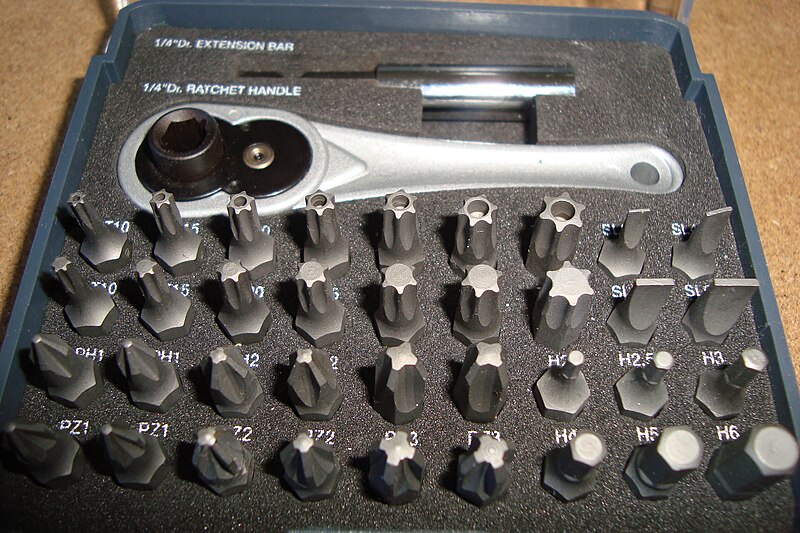The distinction between a socket wrench and a ratchet is central to both professional mechanics and DIY enthusiasts when assembling a toolkit for automotive repair or home improvement projects. A socket wrench, often called a socket spanner, is a type of wrench that has a socket attached at one end, usually designed to fit a specific size of nut or bolt. It is operated by moving the tool back and forth, and this manual motion is what tightens or loosens the fastener. However, it does not inherently have a ratcheting mechanism and hence requires more space around the fastener to be effective.
On the other hand, a ratchet, which can also be termed as a ratchet handle, is a hand tool that holds a socket at the end of a rotating mechanism. This ratcheting mechanism allows the user to turn the socket attached to the ratchet handle in one direction while preventing it from turning in the opposite direction. This feature enables continuous movement without the need to disengage the tool from the fastener, making it highly efficient in tight spaces where movement is limited.
These tools, while similar in function, have unique features that set them apart. Understanding whether a task calls for the fixed nature of a socket wrench or the adaptability of a ratchet can significantly influence the speed and outcome of the job at hand. Their designs cater to different scenarios: a socket wrench is best used where there is ample room to maneuver, whereas a ratchet is the preferred choice in confined spaces. The right selection of these tools can streamline tasks and enhance productivity in various mechanical and maintenance applications.
Understanding the Basics
When discussing tools for tightening and loosening nuts and bolts, it is crucial to distinguish between socket wrenches and ratchets. They each play specific roles in a toolkit and have unique characteristics that set them apart.
Defining a Socket Wrench
A socket wrench is a tool designed to provide a firm grip on a fastener, making it easier to turn. It consists of a handle with a ratcheting mechanism that accommodates various sizes of sockets, which can be attached or detached as needed. The sockets themselves are cylindrical in shape, often designed with a hexagonal interior to fit over nuts and bolts. The wrench’s ratcheting mechanism allows for the rotation of the socket and, consequently, the fastener in one direction while remaining stationary when moved in the opposite direction.
Defining a Ratchet
A ratchet, on the other hand, is a tool that features a handle with a ratcheting mechanism but differs in that it typically has a standard, non-interchangeable square drive size. A ratchet’s handle functions as a lever, and its mechanism is designed to work with sockets that must be matched to the drive size of the ratchet. Ratchets are commonly used where they can be turned back and forth in a swing motion, often in tight spaces where a full rotation is not possible, which makes them highly efficient for repetitive tasks involving nuts and bolts.
Components and Mechanism
The distinction between socket wrenches and ratchets is predominantly found in their components and mechanisms. Each tool employs a different method of operation and is composed of varying parts that provide their unique functionalities.
Ratcheting Mechanism
A ratchet utilizes a gear and pawl mechanism that allows for directional movement, typically in one direction. This mechanism enables a user to turn a fastener without needing to remove and reposition the tool with each movement. The ratcheting action is a result of the pawl engaging with the teeth of the gear, allowing for incremental adjustments.
Handle and Leverage
The handle of both a socket wrench and a ratchet is designed to maximize leverage. The length of the handle determines the amount of torque that can be applied; longer handles provide more torque. Socket wrenches typically have a handle that is part of the entire tool, whereas ratchets have a square drive that can be used with various handles to achieve the desired leverage.
Sockets and Attachments
- Sockets: Socket wrenches are designed to work with a socket set that fits onto the wrench’s square drive. This allows for different sizes of sockets to be attached and detached as necessary.
- Attachments: In contrast, ratchets might have fixed sockets or be compatible with various attachments, including different socket sizes.
- Square Drive: The size of the square drive is a crucial aspect, as it determines the types of sockets or attachments that can be used with the tool.
These components work together to provide the tools’ full range of abilities, allowing users to select the appropriate device based on the task at hand.
Functionality and Use
In the realm of hand tools, understanding the distinct capabilities of socket wrenches and ratchets is crucial for tasks involving nuts and bolts. These tools are designed to apply torque for tightening and loosening fasteners with precision and efficiency.
Tightening and Loosening Fasteners
A socket wrench is primarily used for applying force to turn nuts and bolts. It is a tool designed to fit over the head of a nut or bolt, encompassing it securely to either tighten or loosen it. The typical socket wrench has a non-ratcheting function, meaning one must reposition the tool after a full turn or when movement is limited.
Conversely, a ratchet comes with a ratcheting mechanism, allowing continuous motion in one direction while moving freely in the opposite. This continuous movement is particularly useful in confined spaces where the range of motion is restricted. With a ratchet, one can maintain the position on the fastener without removing and refitting the tool, optimizing efficiency and saving time.
Adjustability and Versatility
The versatility of a ratchet lies in its interchangeable sockets. These sockets come in various sizes and can be changed quickly to fit different nuts and bolts. This feature makes the ratchet a multi-purpose tool capable of working with diverse sizes with the same handle, which enhances adjustability for a range of tasks.
Socket wrenches tend to have a fixed socket size, which reduces their versatility but strengthens them in specific applications where that particular size is continually needed.
Size and Reach
When it comes to size and reach, ratchets typically offer a variety of handles with varying lengths. A longer handle provides more leverage, allowing the application of more torque for loosening or tightening.
Socket wrenches, especially those with T-handles or speeder bars, allow for a quicker rotation around the axis, but they might not provide the same torque or reach as a ratchet. Swivel-head ratchets and extensions also permit access to nuts and bolts in awkward or confined spaces, making them invaluable in many mechanical and repair scenarios.
Types and Variations
The distinction between socket wrenches and ratchets is underscored by their respective types and variations. Each is designed to cater to diverse applications, demonstrating their versatility and adaptation to different tasks.
Socket Wrench Types
Socket wrenches primarily refer to hand tools with a ratcheting mechanism, typically used in conjunction with various socket sizes. The primary types of socket wrenches include:
- Standard Sockets: These are used for general purposes and come in a range of sizes to fit nuts and bolts of different diameters.
- Deep Sockets: Designed to reach nuts on longer threads, deep sockets provide additional reach beyond what standard sockets can achieve.
- Impact Sockets: With thicker walls, impact sockets are crafted to be used with power ratchets like air impact wrenches, where higher torque levels are applied.
- Spark Plug Sockets: These sockets have a specialized rubber insert to protect the spark plug during installation or removal.
- Universal Sockets: A flexible solution for various sizes and shapes of bolts and nuts, these sockets adapt to the size needed.
Ratchet Variations
Ratchets, often termed as ratchet wrenches, come with a variety of head types and sizes but typically serve the same function. The common variations include:
- Fixed Head Ratchets: They have a non-moving head suitable for standard ratcheting tasks.
- Flex-Head Ratchet: These ratchets offer an adjustable head angle, allowing for improved access in restricted spaces.
- Torque Wrenches: A specialized type of ratchet that is used to apply a specific torque to a fastener, often crucial in automotive and aeronautics applications.
- Power Ratchets: These are usually powered by electricity or air and provide significant torque, reducing manual effort and improving efficiency.
- Types of Ratchet Wrenches: Ratchet wrenches can vary in drive size, often delineated in measurements like ¼ inch, ½ inch, and 3/8 inch, each suitable for different sizes of sockets and applications.
Practical Considerations
When selecting between a socket wrench and a ratchet, one should consider the speed and efficiency of use, material and build quality, and size and portability to ensure the tool aligns with the task requirements.
Speed and Efficiency of Use
A ratchet allows for a faster operation as it can turn a fastener without needing to remove and reposition the tool on the bolt. This increased speed can lead to a more efficient process, especially in tight spaces where movement is limited. On the other hand, socket wrenches often require more movement which can slow down the workflow if frequent repositioning is necessary.
Material and Build Quality
The material of the tool greatly affects durability and performance. Socket wrenches and ratchets are typically made from high-quality steel, which ensures a good grip and the ability to apply high torque without damage. Ratchets generally have a mechanism inside their head which requires attention to the build quality to maintain the ease of use and longevity of the tool.
Size and Portability Criteria
Ratchets tend to be more compact and suitable for a toolbox where space is at a premium. Socket wrenches might have a longer handle to provide additional leverage and rotational force but can be bulkier. For those prioritizing portability, a ratchet with interchangeable sockets is a more versatile and space-efficient option.
Specialized Applications
The choice between a socket wrench and a ratchet largely hinges on the specific demands of the task at hand, with professional environments often necessitating a distinct approach compared to do-it-yourself (DIY) and home use scenarios.
Professional Use
Professionals in fields such as construction, plumbing, and carpentry typically require tools that can withstand heavy use and offer precision. Socket wrenches find their niche in situations where a specific size bolt or nut is repeatedly handled, thus, being a staple in a professional’s toolkit for consistency and speed. They are often used in:
- Engine work where the same size bolts are prevalent
- Construction environments where a particular joint is frequently encountered
Ratchets, on the other hand, provide versatility with interchangeable sockets, making them indispensable for jobs that involve a variety of bolt sizes. The ratchet’s ability to quickly switch between sockets without repositioning makes it ideal for:
- Situations requiring rapid movement through different sized fasteners
- Tight spaces where repositioning a tool is cumbersome
DIY and Home Use
For DIY enthusiasts and home improvement projects, tools must balance functionality with ease of storage and cost. Ratchets excel in home environments due to their flexibility and the ability to replace a set of wrenches with multiple sockets. They are beneficial for:
- Assembling furniture that comes with bolts of different sizes
- General home maintenance tasks that do not necessitate professional-grade tools
Socket wrenches may also be included in a home toolkit for their ease of use when dealing with a common task, such as bicycle or automotive repairs, that consistently involve certain bolt sizes. Their longer handles also provide additional leverage, which can be advantageous for:
- Individuals lacking the strength to exert high levels of force
- Instances where a singular bolt size is predominantly used
The application of socket wrenches and ratchets thus varies across professional and home settings, each offering tailored advantages that cater to the demands of their respective environments.
Buying Guide
When selecting between a socket wrench and a ratchet, one’s focus should be on the specific job requirements and the features of each tool that cater to those needs. This guide will assist in making an informed decision on which tool to purchase based on their functional differences and applications.
Selecting the Right Tool for the Job
The primary consideration should be the task at hand. A socket wrench is often a solid choice for jobs that require direct power and a straightforward turning motion. It’s simple and usually has no moving parts, which can be a benefit when dealing with especially tight or stubborn fasteners. When considering a socket wrench, observe the type of sockets it accommodates, such as SAE or metric sockets, and if they align with the needs of the majority of tasks.
A ratchet, on the other hand, stands out in terms of versatility and efficiency for tasks that involve a significant amount of turning. The ratchet’s geared drive allows for continuous motion without needing to lift the tool from the fastener. For tighter spaces, a ratchet with a flexible head or jointed handle can be particularly beneficial. Also, look for a ratchet with a comfortable grip and a robust roller bearing mechanism to ensure ease of use and durability.
Comparison of Socket Wrench and Ratchet
When comparing these tools, several features demand attention:
- Versatility: Ratchets typically offer more versatility with their ability to work with various types of sockets including, but not limited to, torx bit sockets, spline sockets, and star sockets. A ratchet’s interchangeable sockets make it suitable for a wide range of fasteners.
- Combination: Some tools offer a combination of a socket wrench and ratchet mechanism for added flexibility. Evaluating these options could provide a more comprehensive solution.
- Portability: Socket wrenches tend to be more compact and portable than ratchets due to their simplicity. This could be a deciding factor for those who need to carry their tools with them.
- Power Tools Compatibility: If the job requires more power, one might consider if the socket wrench or ratchet is compatible with power tools like breaker bars for added torque.
- Lock Mechanism: For users who will engage in repetitive tasks, the locking feature in a ratchet can save time and energy. It ensures the socket remains attached to the fastener.
| Feature | Socket Wrench | Ratchet |
|---|---|---|
| Versatility | Limited by design | Highly versatile with interchangeable sockets |
| Power Tool Compatibility | Typically not applicable | Some ratchets can be used with power tools |
| Portability | Generally more portable | Bulkier due to geared drive mechanism |
| Lock Mechanism | Not applicable | Often features a lock mechanism |
One should weigh these comparisons, keeping in mind the specific needs of their work to choose the best product.
Frequently Asked Questions
In this section, you will find detailed answers to common inquiries regarding the differences and specific uses of socket wrenches and ratchets, which are essential tools for working with fasteners.
Why might one choose a ratchet over a traditional wrench?
One would choose a ratchet over a traditional wrench because the ratchet mechanism allows for continuous motion without repositioning the tool. This is especially useful in tight spaces where movement is limited.
In what scenarios is a socket wrench typically utilized?
A socket wrench is typically utilized for tasks requiring quick and repetitive fastening or unfastening of nuts and bolts, providing efficiency due to its ratcheting function which does not require the tool to be lifted after each turn.
How does a ratchet wrench differ from a standard wrench?
A ratchet wrench differs from a standard wrench in that it includes a ratcheting mechanism within the handle, allowing for a more efficient turning process. It often has a fixed drive size and may have built-in sockets rather than interchangeable ones.
Can you explain the variations among the different types of sockets?
The different types of sockets include standard (shallow) sockets for accessing fasteners in open areas and deep well sockets for extended bolts. They come in various drive sizes and are often produced in six-point or twelve-point variations for different fastener types.
How is a spark plug socket distinct from a regular deep well socket?
A spark plug socket is distinct from a regular deep well socket as it is specifically designed to fit spark plugs. It typically has a rubber insert or a spring mechanism to hold the spark plug snugly and prevent it from being damaged during installation or removal.
What are the components of a complete ratchet set?
A complete ratchet set usually includes a ratchet handle, an assortment of sockets in various sizes and depths, extensions for additional reach, and sometimes a universal joint for angled access.
